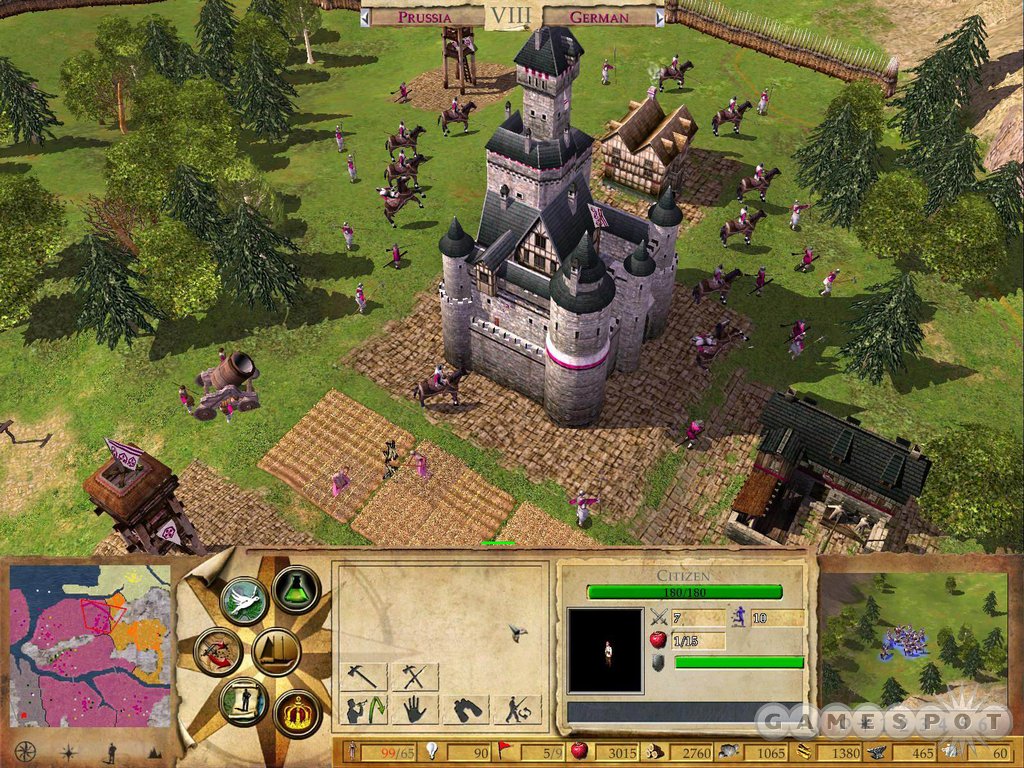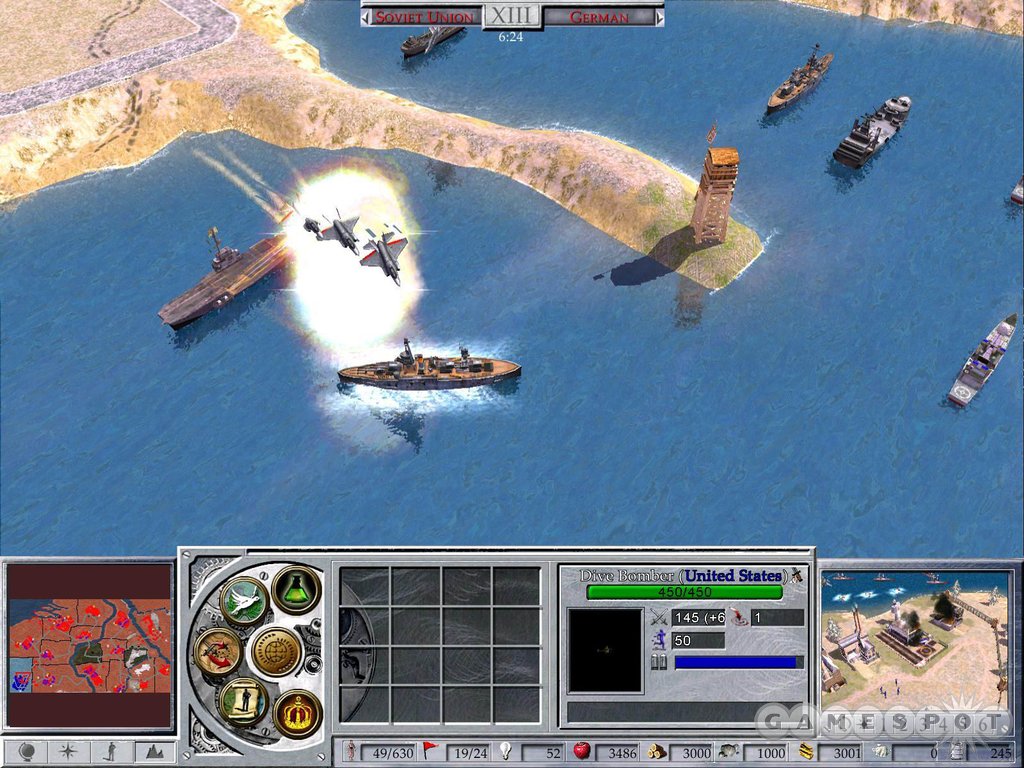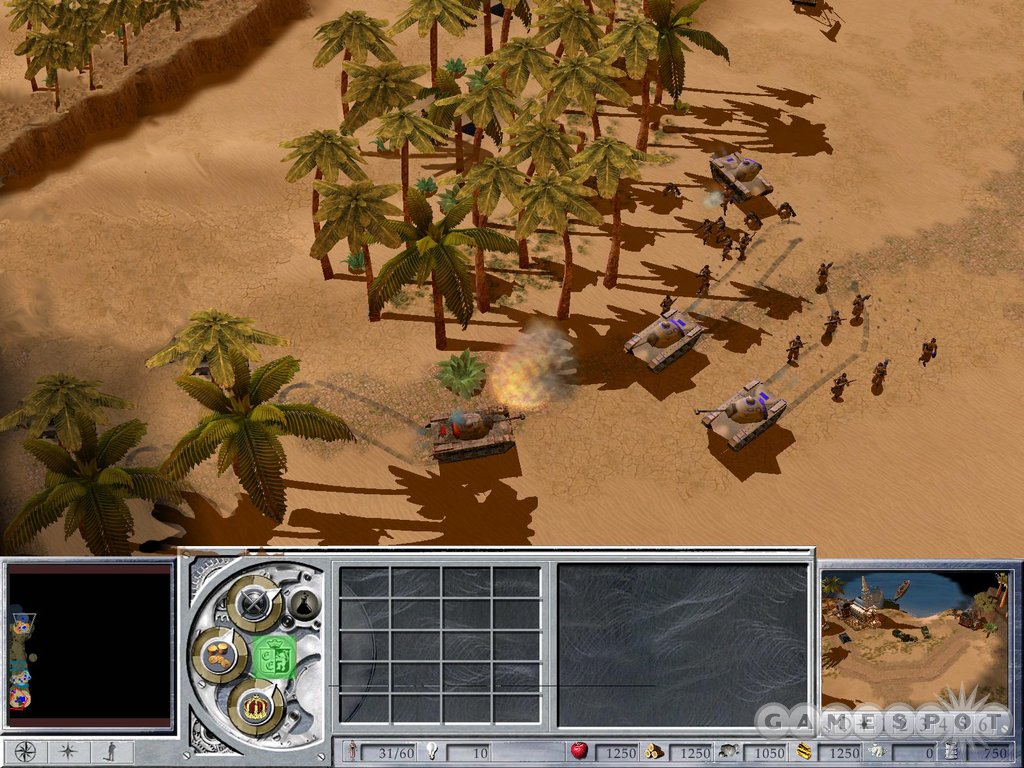Empire Earth II Multiplayer Hands-On
We go head-to-head against Dr. Ian Davis, CEO of Mad Doc Software, in a multiplayer game of Empire Earth II.
With Empire Earth II, developer Mad Doc Software is looking to create a successor that's big enough to fill the shoes of 2001's Empire Earth, which itself was a massive game. The original Empire Earth was somewhat similar to the classic turn-based strategy game Civilization, only it took place in real time. In it, you guided a civilization from the dawn of history to the future by gathering resources, researching technologies, and building armies to crush your opponents. To get the latest on Empire Earth II, we had the opportunity recently to play some multiplayer matches against numerous opponents, including Dr. Ian Davis, the CEO of Mad Doc.

In Empire Earth II, you'll take control of one of 14 different civilizations--which range from the Americans, the British, the Greeks, and the Turks--and then you'll guide them through approximately 10,000 years of history that are divided into 15 epochs, or ages. You can also customize each game, so if you only want to play during a single epoch or if you wish to start a game in the industrialized age or beyond, you can do so. The scale of Empire Earth II is vast, especially considering that there are more than 300 different buildings and 270 military units total. However, each civilization will only have access to its own buildings and units.
During our multiplayer session, we were struck by how configurable the multiplayer game is. In it, you can adjust nearly every variable in the game. Davis compared it to a favorite board game, like Monopoly, that you have special "house rules" for to adjust the gameplay. In the same manner, you can customize each Empire Earth II game any number of ways. For instance, you can adjust the pace of the game--from the gather rate of your workers to the speed of your units. We played a fast-paced game, and it felt very action-heavy at times, mainly because we quickly churned out units and researched technologies. That match was over in fewer than 20 minutes. Then we played a slower-paced game against Davis himself, and it felt like a completely different affair. Basically, the slow nature of that game allowed us more time to both analyze and plan battles. That match lasted more than an hour, and during the course of it, momentum swung back and forth like a pendulum. For every move we came up with, Davis came up with a countermove, illustrating Empire Earth II's gameplay balance at this point. Even dropping nuclear bombs on his cities wasn't enough, because he somehow managed to rally his side, thus staving off certain defeat.
Davis told us about two new multiplayer features that have been developed over the past five months. The first is "quickstart," which is designed to eliminate the tedious opening minutes of most real-time strategy games. In quickstart, you select whether you want to start with a militaristic, an economic, or an imperial set of buildings, and you also choose if you want to start with a balanced, an offensive, or a defensive group of military units. This allows you to start a match with a formidable and customizable group of units and buildings, and it avoids the traditional 10- to 15-minute buildup as players gather resources and construct buildings and units. The second new feature is a multiplayer mode called sole survivor, which Davis says is a simple idea that has had a revolutionary effect on gameplay. In sole survivor matches, players may ally with one another, but the fact remains that only one player can win the match. This means that at a certain point, allies will have to turn on one another, which remains firmly planted in players' minds. The results are unpredictable, because players warily keep eyes on their supposed friends, even while they're busy smashing their enemies.

Mad Doc has been streamlining the game's interface further, as well. We've already explored some of the big, new user interface features in the game, such as the citizen manager that lets you switch to a map so that you can quickly and easily distribute workers to harvest resources. The designers have now incorporated some of that functionality into the main screen. Now, a small column along the bottom of the screen allows you to pick up and distribute workers with just a few clicks of the mouse. If you need more food production, simply use the right mouse button to pick up workers from stone production, and drop them onto the food icon by clicking the left mouse button.
The war-planning interface has also been improved. The war planner is a map that you can strategize military actions on by drawing lines, much like the way a football couch will draw plays on a notepad. All you have to do is click on the map and draw a path, and then you hit a button to send that plan to your allies. You and your allies will then see the battle plan in the minimap that occupies the bottom left corner of the main screen. Another new interface feature that was just implemented involves the picture-in-picture display at the bottom right corner of the screen. Like most real-time strategy games, this window allows you to keep an eye on the action that's happening elsewhere on the map. The big, new change is that you can now click and issue orders to units in the window, thus avoiding the need to have to move the camera back and forth around the map. These sound like little things, but Davis says that put together, they help to completely streamline Empire Earth II's gameplay.
Mad Doc has spent quite a bit of effort on the game's look, and Davis told us that the graphics engine incorporates many of the latest graphical features. The matches we played were set on a somewhat arid continent, and the wind constantly pushed up small clouds of dust that blew across the ground. Things got worse when powerful sandstorms rolled in, and visibility plummeted. These weather effects aren't just for show, either, because inclement weather will affect the performance of your units in battle. And there are other beautiful effects in the game, not the least of which are the nuclear explosions.

Perhaps the most impressive detail about Empire Earth II is how polished it looks at this stage in development. All the pieces are almost in place, and judging by how complete the game appears, you'd expect that Mad Doc is working to wrap the game up for the holidays. However, Empire Earth II is still scheduled for a spring 2005 release, which means the developer still has months left to polish the game. Davis says that Mad Doc plans to spend a lot of that time balancing gameplay, which it feels is an important characteristic found in great real-time strategy games. At this point, it's probably safe to say that Empire Earth II is shaping up to be one of the major real-time strategy games of 2005.
Got a news tip or want to contact us directly? Email news@gamespot.com
Join the conversation